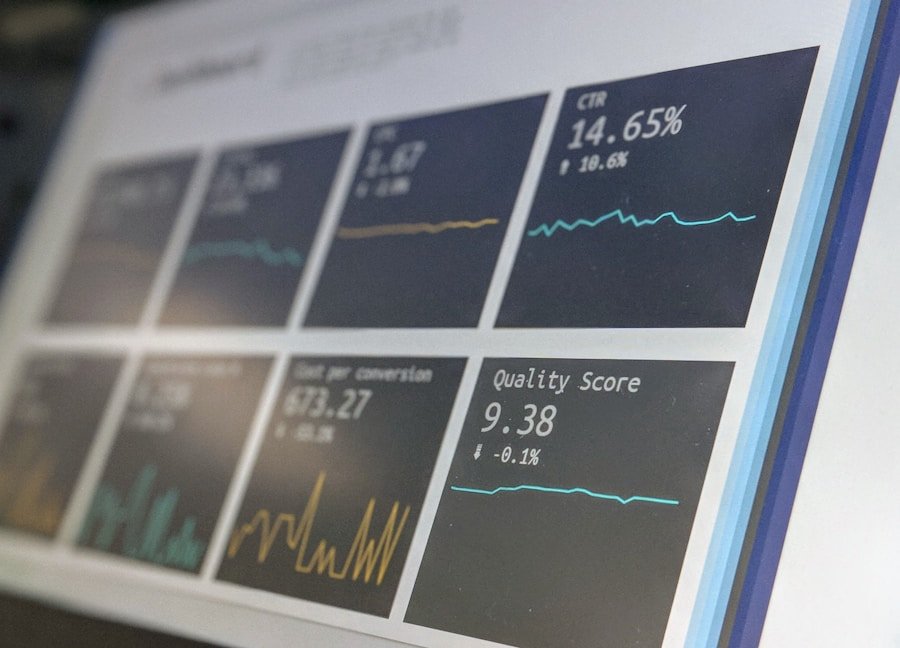Packet sniffing is a network monitoring technique that involves intercepting and logging network traffic. This practice can serve various purposes, including troubleshooting network issues, monitoring network activity, and even malicious activities such as unauthorized data theft. When a packet is transmitted over a network, it contains essential information, including the source and destination IP addresses, the protocol used, and the actual data being sent.
By capturing and analyzing this information, packet sniffing provides valuable insights into network operations. Packet sniffing can be accomplished using specialized hardware or software and can be performed on both wired and wireless networks. A range of tools is available for packet sniffing, from simple command-line utilities to advanced graphical interfaces.
These tools enable users to capture and analyze network traffic in real-time, offering a detailed view of the data being transmitted over the network.
Key Takeaways
- Packet sniffing is the practice of capturing and analyzing network traffic to understand how data is transmitted and received.
- Tools and techniques for packet sniffing include software like Wireshark and hardware like network taps.
- Understanding network traffic involves analyzing the different protocols and data types being transmitted, such as HTTP, FTP, and DNS.
- Ethical considerations in packet sniffing include obtaining proper authorization and respecting privacy laws when capturing and analyzing network data.
- Common uses of packet sniffing include troubleshooting network issues, monitoring for security threats, and optimizing network performance.
Tools and Techniques for Packet Sniffing
Popular Packet Sniffing Tools
Wireshark is a widely-used open-source packet analyzer that enables users to capture and analyze network traffic in real-time. It provides a detailed view of the data being transmitted over the network, allowing users to inspect individual packets and even reconstruct entire conversations.
Command Line Utilities
Tcpdump is a command-line utility that allows users to capture and analyze network traffic on Unix-based systems. It provides a simple and powerful interface for capturing and analyzing network traffic, making it a popular choice for network administrators and security professionals.
Techniques for Packet Sniffing
In addition to these tools, there are also various techniques that can be used for packet sniffing. For example, ARP spoofing can be used to intercept and redirect network traffic, allowing an attacker to capture sensitive information such as usernames and passwords. Another technique, known as port mirroring, allows network administrators to capture and analyze traffic on specific ports of a switch or router.
Understanding Network Traffic
Understanding network traffic is essential for effective packet sniffing. Network traffic refers to the data that is transmitted over a network, including both the actual data being transmitted and the control information used to manage the network. By capturing and analyzing network traffic, users can gain valuable insights into the workings of a network, including the types of protocols being used, the devices communicating on the network, and the actual data being transmitted.
Network traffic can be classified into two main categories: unicast and multicast/broadcast. Unicast traffic refers to data that is sent from one device to another, while multicast/broadcast traffic refers to data that is sent to multiple devices at once. By capturing and analyzing both types of traffic, users can gain a comprehensive view of the data being transmitted over the network.
In addition to understanding the types of traffic being transmitted over a network, it is also important to understand the protocols being used. Different protocols have different characteristics and requirements, and understanding these protocols is essential for effective packet sniffing. For example, some protocols may use encryption to secure the data being transmitted, while others may transmit data in plain text.
Ethical Considerations in Packet Sniffing
Ethical considerations are an important aspect of packet sniffing. While packet sniffing can be a valuable tool for troubleshooting network issues and monitoring network activity, it can also be used for malicious purposes such as stealing sensitive information. As such, it is important for users to consider the ethical implications of packet sniffing and to use it responsibly.
One important ethical consideration in packet sniffing is privacy. When capturing and analyzing network traffic, users may inadvertently capture sensitive information such as usernames, passwords, or personal communications. It is important for users to take steps to protect the privacy of individuals whose data may be captured during packet sniffing, such as using encryption or anonymization techniques.
Another important ethical consideration in packet sniffing is legality. In many jurisdictions, intercepting and analyzing network traffic without proper authorization is illegal. It is important for users to ensure that they have the proper authorization before engaging in packet sniffing, and to comply with all relevant laws and regulations.
Common Uses of Packet Sniffing
Packet sniffing has a variety of common uses in both professional and personal settings. One common use of packet sniffing is troubleshooting network issues. By capturing and analyzing network traffic, users can gain valuable insights into the workings of a network, allowing them to identify and resolve issues such as slow performance or dropped connections.
Another common use of packet sniffing is monitoring network activity. By capturing and analyzing network traffic, users can gain a detailed view of the data being transmitted over the network, allowing them to monitor for suspicious or unauthorized activity. This can be particularly valuable for security professionals who are responsible for protecting the integrity of a network.
In addition to these professional uses, packet sniffing also has a variety of personal uses. For example, users may use packet sniffing to monitor their own network activity, such as tracking their internet usage or monitoring for unauthorized devices on their home network.
Analyzing and Interpreting Packet Data
Protocol Analysis
One common technique for analyzing packet data is protocol analysis. This involves inspecting individual packets to identify the types of protocols being used, as well as any control information used to manage the network. By understanding the protocols being used, users can gain valuable insights into the characteristics and requirements of the data being transmitted.
Content Analysis
Another common technique for analyzing packet data is content analysis. This involves inspecting the actual data being transmitted over the network, allowing users to gain insights into the nature of the data being transmitted. For example, users may inspect individual packets to identify specific types of data such as images or videos.
Benefits of Packet Data Analysis
By analyzing packet data, users can gain a deeper understanding of their network and identify potential issues or security threats. This information can be used to optimize network performance, improve security, and troubleshoot network problems.
Best Practices for Securing Networks against Packet Sniffing
Securing networks against packet sniffing is an essential aspect of maintaining the integrity of a network. There are a variety of best practices that can be used to secure networks against packet sniffing, ranging from simple measures such as using encryption to more advanced techniques such as implementing intrusion detection systems. One important best practice for securing networks against packet sniffing is using encryption.
By encrypting sensitive data before transmitting it over a network, users can prevent unauthorized individuals from capturing and analyzing the data. This can be particularly valuable for protecting sensitive information such as usernames, passwords, or personal communications. Another important best practice for securing networks against packet sniffing is implementing intrusion detection systems.
These systems can be used to monitor network traffic for suspicious or unauthorized activity, allowing administrators to identify and respond to potential security threats. In addition to intrusion detection systems, firewalls can also be used to control the flow of traffic into and out of a network, preventing unauthorized individuals from capturing sensitive information. In conclusion, packet sniffing is a valuable tool for capturing and analyzing network traffic.
By understanding the tools and techniques available for packet sniffing, as well as the ethical considerations involved, users can gain valuable insights into the workings of a network. Whether troubleshooting network issues or monitoring for suspicious activity, packet sniffing can be a powerful tool for both professional and personal use. By following best practices for securing networks against packet sniffing, users can ensure that their networks remain secure and protected against potential security threats.
FAQs
What is packet sniffing?
Packet sniffing is the practice of capturing and analyzing data packets as they pass through a computer network. This allows the user to inspect the contents of the packets, including the source and destination addresses, as well as the data being transmitted.
What are the uses of packet sniffing?
Packet sniffing can be used for various purposes, including network troubleshooting, security monitoring, and performance optimization. It can also be used by network administrators to identify and resolve network issues, as well as by security professionals to detect and prevent malicious activities.
What tools are used for packet sniffing?
There are several tools available for packet sniffing, including Wireshark, tcpdump, and Microsoft Network Monitor. These tools allow users to capture and analyze network traffic, providing detailed information about the data packets being transmitted.
Is packet sniffing legal?
Packet sniffing can be legal or illegal, depending on the context in which it is used. In a professional or educational setting, where the user has proper authorization and is using packet sniffing for legitimate purposes, it is legal. However, using packet sniffing to intercept and analyze data without proper authorization is illegal and can result in severe consequences.
What are the potential risks of packet sniffing?
One of the potential risks of packet sniffing is the exposure of sensitive information, such as usernames, passwords, and other confidential data. Additionally, if used improperly, packet sniffing can violate privacy laws and regulations, leading to legal consequences. It is important to use packet sniffing tools responsibly and ethically.












